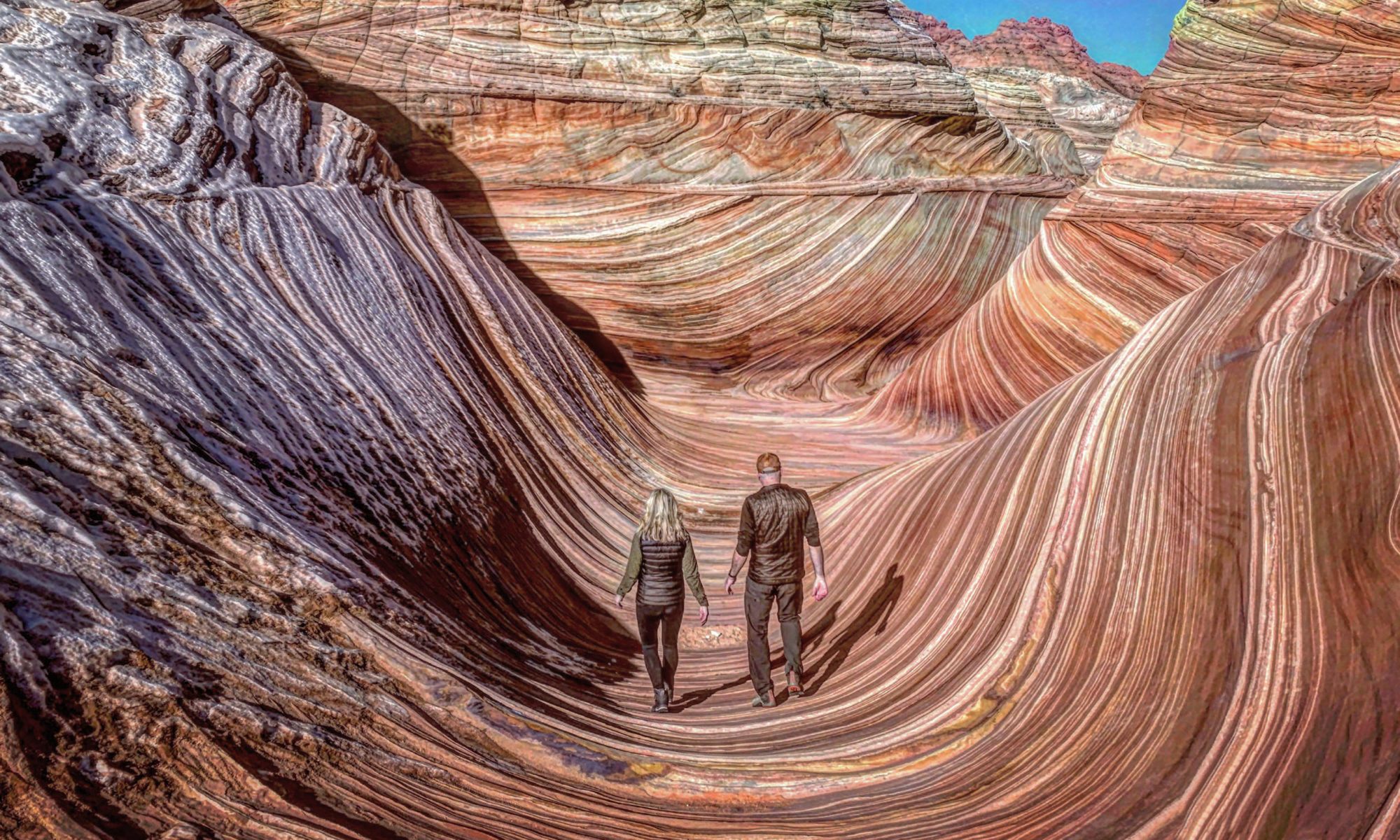Every autumn when the rain starts falling in the Pacific Northwest, and the wind turns chilly, we can’t help but think of our trip to Big Bend National Park. It was the end of October when we visited, and hiking in the desert heat taught us that if we ever felt that fall had come too soon, all we have to do is visit Big Bend to get back to summer. The temperature reached 98 degrees on Halloween that year. (November through March are the park’s busiest months because daytime temperatures are mild.)
Not a super-easy park to get to, it’s a five and a half-hour drive from El Paso and six and a half-hour drive from San Antonio, but certainly worth the trip. When looking at a map of Texas, you’ll see a pointed bump-out on the southern border where the Rio Grande makes a big bend. The land formed by the bend in the river makes up the park. One of the cool things about the park is its varied landscape: mountains in the middle surrounded by scrubby desert, with a wild river forming the southern boundary.

Hiking through the trees on the Lost Mine Trail in the Chisos Mountains, you’d never know that only a few miles away was a barren desert landscape. We stayed at the Chisos Mountain Lodge and drove a short distance to get to the trailhead; the entire hike we were on the lookout for one of the mountain lions that live in the area. Not sure if we were hoping to see one or not see one—maybe both—but we didn’t. A ranger told us that you’d only see a mountain lion in the wild if the mountain lion wants you to see him. “They probably saw you, though,” he added.

Within walking distance of the lodge was the Window Trail. Following a trickle of a stream for about two and a half miles, the trail winds through stunted oak trees and ends abruptly in a canyon where the rock walls frame the view into the distance, and the trail disappears over the edge of the canyon forming a pouroff (dry waterfall). Looking west through the Window, you see the Chihuahuan Desert stretching endlessly beneath the mountains. I don’t remember much of the view as I was holding onto the back of Karen’s pants; she was creeping way too close to the edge to take pictures, and I was trying to keep her from falling. It’s a long way to the bottom of the pouroff.
Down on the desert floor, the park roads lead to a couple of river access points. In the east is Rio Grande Village, which has a visitor center, campground, and store. A few miles further east of the village is a parking area with several trailheads. That’s where we picked up the Boquillas Canyon Trail and hiked about a mile along the Rio Grande. A Mexican national stood on the Mexican side of the river singing to us. He was very entertaining us in hopes that we’d leave a tip in the coffee can he’d placed on the U.S. side of the river. That was several years ago when it was illegal for anyone to cross the Rio Grande at that location.
In the west, on the other side of the bend, is Santa Elena Canyon. From the end of the park road, it’s a short walk to the river. The flat, sandy river bank is the perfect place to put-in rafts and canoes. Starting there and floating east is the most popular place for one-day and multiple-day river trips in the park because of the scenery. The walls of the canyons that hug the river are as much as 1,500 high in places along that stretch.

The nearest town, outside of the park, is Terlingua, population 58 (according to the 2010 census). Often described as a ghost town, it seemed to be plenty alive when we went there for dinner one night. The mobile-home-turned-pizza restaurant where we ate served great pizza. What else do you need when visiting a national park besides the great outdoors and a pizza? Once a year the folks in Terlingua would answer that question with one word: chili.
Usually held over the first weekend in November, the mother of all chili cookoffs draws a crowd to Terlingua. This year (2018) will be the 53rd annual Chili Appreciation Society International (CASI) chili cook-off. CASI sanctions over 500 cooking events each year and considers the Terlingua event their ultimate competition. Chili is not the only food being judged this year: traditional salsa, non-traditional salsa, hot wings, and beans are also separate competitive categories. This event is yet another item on our must-see-before-you-die list. Or as Karen would say, “It’s in my wish bucket.”

